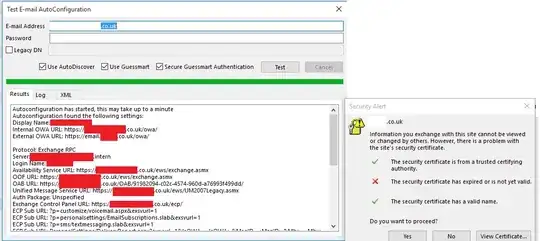In my network setup, I have two computers
- a client with Windows 10
- an Ookla server with CentOS v7.9, which is a VM hosted in an ESXi hypervisor
that both have two network adapters of the same kind:
- an adapter configured for Internet access and for logging on in the machines with SSH, utilizing plain 1Gpbs Ethernet links (let's call them "management" NICs)
- another one to facilitate a 10Gbps connection between them, from which I want to conduct speedtests.
Note that a service router and some additional networking devices are placed between the client and the server in the 10Gbps link, but I'm pretty confident they're configured properly.
The management NICs have IPs in different subnets (10.85.xxx.yyy in the client and 10.88.zzz.www in the server), while the 10Gbps-facilitating NICs have IPs in the same subnet (50.50.50.50/24 in the server and 50.50.50.51/24 in the client). No gateway is configured for the subnet 50.50.50.0/24, as no device to facilitate gateway capabilities for this subnet is in place. My management NICs have configured gateways, though, so I'm not violating the "single gateway" principle.
Although the routing table in the Windows 10 PC was configured automatically when the IP 50.50.50.51/24 was set to its 10Gbps-facilitating NIC, I couldn't even ping the IP 50.50.50.50 and see the ICMP ping packets transmitted from its 10Gbps-facilitating NIC, not to mention conducting a speedtest on this link. Instead, packets were transmitted from its "management" NIC (the interface "10.85.220.116" in the routing table below). For that reason, I also added the static route: route add 50.50.50.50 mask 255.255.255.255 0.0.0.0 metric 2 IF 13 (where IF 13 is the interface "50.50.50.51" below), but the ping packets kept transmitting from the 1Gbps adapter, as I saw in Wireshark captures. Problem did not get resolved by rebooting the client. Additionally, pinging in the reverse direction (server --> client) is not successful too.
So far, my routing table in the Windows 10 PC is as follows:
Also, when I ping the host 50.50.50.50 first time, I can see that non-replied ARP requests to be broadcasted from the NIC 50.50.50.51.

What else can I try in order to route all traffic to the subnet 50.50.50.0/24 from the interface with the IP address 50.50.50.51?
In case that it matters, my Win 10 build is: 10.0.17134.1488.
UPDATE: I also tried to decrease the metric of the routes to 50.50.50.0/24 (route change 50.50.50.0 mask 255.255.255.0 0.0.0.0 metric 2 IF 13) after deleting the static route to 50.50.50.50, but it didn't resolve my problem too. Now, my routing table is as follows:

and I still have the same problem.
UPDATE #2 By a djdomi's suggestion in the chat, I realized that the IPs selection could be an issue. So, I selected IPs from the subnet 192.168.10.0/24 for the 10Gbps adapters (192.168.10.1 for the server, 192.168.10.2 for the client) without entering the gateway (10.85.220.1 remains the default gateway) and did a reboot. But, the issue still remains.
UPDATE #3 I found some networking issues in the intermediate devices (which facilitate forwarding in the L2 layer and service routing). After resolving them, I'm still having the same issue. But now, when I issue tracert 192.168.10.1 to identify the path to the 10Gbps adapter of the server, I see some LLMNR frames transmitted to a multicast IP (224.0.0.252) from the 10Gbps NIC of the Win 10 client which query for the IP of the default gateway configured in the 1Gbps NIC (10.85.220.1). Ping still prefers the 1Gbps NIC. Why is this done? Anyway, I disabled the LLMNR protocol by following the instructions in this link, as this IP of the 10Gbps NIC in the server was associated with the Ookla server URL in the /etc/hosts file, but this didn't resolve the problem either.

